Do you want to control your Arduino with an IR remote? Do you want to use your Arduino to control
your stereo or other devices? This IR remote library lets you both send and receive IR remote codes
in multiple protocols. It supports NEC, Sony SIRC, Philips RC5,
Philips RC6, and raw protocols. If you want additional protocols, they are straightforward to add.
The library can even be used to record codes from your remote and re-transmit them,
as a minimal universal remote.
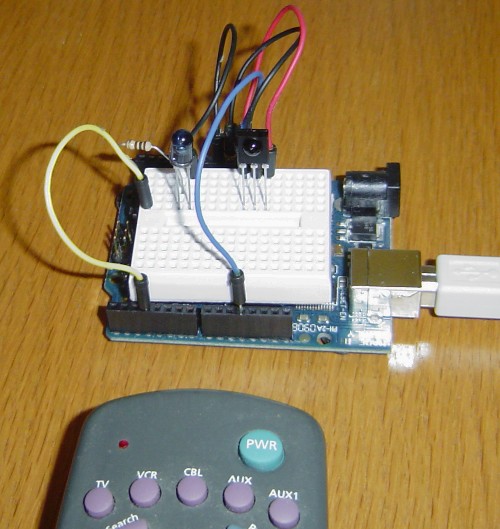
To use the library, download from github and follow the installation instructions in the readme.
How to send
This infrared remote library consists of two parts: IRsend transmits IR remote packets, while IRrecv receives and decodes an IR message.
IRsend uses an infrared LED connected to output pin 3. To send a message, call the send method for the desired protocol with the data to send and the number of bits to send. The
examples/IRsendDemo sketch provides a simple example of how to send codes:
#include <IRremote.h>
IRsend irsend;
void setup()
{
Serial.begin(9600);
}
void loop() {
if (Serial.read() != -1) {
for (int i = 0; i < 3; i++) {
irsend.sendSony(0xa90, 12); // Sony TV power code
delay(100);
}
}
}
This sketch sends a Sony TV power on/off code whenever a character is sent to the serial port, allowing the Arduino to turn the TV on or off. (Note that Sony codes must be sent 3 times according to the protocol.)
How to receive
IRrecv uses an infrared detector connected to any digital input pin.
The examples/IRrecvDemo sketch provides a simple example of how to receive codes:
#include <IRremote.h>
int RECV_PIN = 11;
IRrecv irrecv(RECV_PIN);
decode_results results;
void setup()
{
Serial.begin(9600);
irrecv.enableIRIn(); // Start the receiver
}
void loop() {
if (irrecv.decode(&results)) {
Serial.println(results.value, HEX);
irrecv.resume(); // Receive the next value
}
}
The
IRrecv class performs the decoding, and is initialized with
enableIRIn(). The
decode() method is called to see if a code has been received; if so, it returns a nonzero value and puts the results into the
decode_results structure. (For details of this structure, see the
examples/IRrecvDump sketch.) Once a code has been decoded, the
resume() method must be called to resume receiving codes. Note that
decode() does not block; the sketch can perform other operations while waiting for a code because the codes are received by an interrupt routine.
Hardware setup
The library can use any of the digital input signals to receive the input from a 38KHz IR receiver module. It has been
tested with the Radio Shack
276-640 IR receiver and the Panasonic
PNA4602. Simply wire power to pin 1, ground to pin 2, and the pin 3 output to an Arduino digital input pin, e.g. 11. These receivers provide a filtered and demodulated inverted logic level output; you can't just use a photodiode or phototransistor. I have found these detectors have pretty good range and easily work across a room.
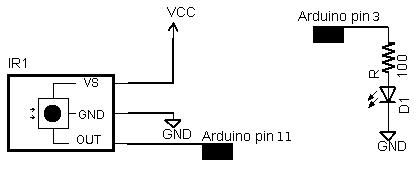
For output, connect an IR LED and appropriate resistor to PWM output pin 3. Make sure the polarity of the LED is correct, or it won't illuminate - the long lead is positive. I used a NTE 3027 LED (because that's what was
handy) and 100 ohm resistor; the range is about 15 feet. For additional range, you can amplify the output with a transistor.
Some background on IR codes
An IR remote works by turning the LED on and off in a particular pattern. However, to prevent
inteference from IR sources such as sunlight or lights, the LED is not turned on steadily, but is
turned on and off at a modulation frequency (typically 36, 38, or 40KHz). The time when a modulated
signal is being sent will be called a mark, and when the LED is off will be called a space.
Each key on the remote has a particular code (typically 12 to 32 bits) associated with it, and broadcasts
this code when the key is pressed. If the key is held down, the remote usually repeatedly broadcasts the
key code. For an NEC remote, a special repeat code is sent as the key is held down, rather than repeatedly
sending the code. For Philips RC5 or RC6 remotes, a bit in the code is toggled each time a key is pressed;
the receiver uses this toggle bit to determine when a key is pressed down a second time.
On the receiving end, the IR detector demodulates this signal, and outputs a logic-level signal indicating if it is
receiving a signal or not. The IR detector will work best when its frequency matches the sender's frequency,
but in practice it doesn't matter a whole lot.
The best source I've found for details on the various types of IR codes is SB IR knowledge base.
Handling raw codes
The library provides support for sending and receiving raw durations. This is intended mainly for debugging, but can also be used for protocols the library doesn't implement, or to provide universal remote functionality.
The raw data for received IR measures the duration of successive spaces and marks in 50us ticks. The first measurement is the gap, the space before the transmission starts. The last measurement is the final mark.
The raw data for sending IR holds the duration of successive marks and spaces in microseconds. The first value is the first mark, and the last value is the last mark.
There are two differences between the raw buffers for sending and for receiving. The send buffer values are in microseconds, while the receive buffer values are in 50 microsecond ticks. The send buffer starts with the duration of the first mark, while the receive buffer starts with the duration of the gap space before the first mark. The formats are different because I considered it useful for the library to measure gaps between transmissions, but not useful for the library to provide these gaps when transmitting. For receiving, 50us granularity is sufficient for decoding and avoids overflow of the gaps, while for transmitting, 50us granularity is more than 10% error so 1us granularity seemed better.
Obtaining codes for your remote
The easiest way to obtain codes to work with your device is to use this library to decode and print
the codes from your existing remote.
Various libraries of codes are available online, often in proprietary formats. The Linux Infrared
Remote Control project (LIRC), however, has
an open format for describing codes for many remotes. Note that even if you can't find codes for your
exact device model, a particular manufacturer will usually use the same codes for multiple products.
Beware that other sources may be inconsistent in how they handle these protocols, for instance reversing the order, flipping 1 and 0 bits, making start bits explicit, dropping leading or trailing bits, etc. In other words, if the IRremote library yields different codes than you find listed elsewhere, these inconsistencies are probably why.
Details of the receiving library
The IRrecv library consists of two parts. An interrupt routine is called every 50 microseconds, measures
the length of the marks and spaces, and saves the durations in a buffer. The user calls a decoding routine
to decode the buffered measurements into the code value that was sent (typically 11 to 32 bits).
The decode library tries decoding different protocols in succession, stopping if one succeeds. It returns
a structure that contains the raw data, the decoded data, the number of bits in the decoded data,
and the protocol used to decode the data.
For decoding, the MATCH macro determine if the measured mark or space time is approximately equal to
the expected time.
The RC5/6 decoding is a bit different from the others because RC5/6 encode bits with mark + space or
space + mark, rather than by durations of marks and spaces. The getRClevel helper method splits up
the durations and gets the mark/space level of a single time interval.
For repeated transmissions (button held down), the decoding code will return the same decoded value over and over. The exception is NEC, which sends a special repeat code instead of repeating the transmission of the value. In this
case, the decode routine returns a special REPEAT value.
In more detail, the receiver's interrupt code is called every time the TIMER1 overflows, which is set to happen after 50 microseconds. At each interrupt, the input status is checked and the timer counter is incremented.
The interrupt routine times the durations of marks (receiving a modulated signal) and
spaces (no signal received), and records the durations in a buffer. The first duration is the length
of the gap before the transmission starts. This is followed by alternating mark and space measurements.
All measurements are in "ticks" of 50 microseconds.
The interrupt routine is implemented as a state machine. It starts in STATE_IDLE, which waits for the gap
to end. When a mark is received, it moves to STATE_MARK which times the duration of the mark.
It then alternates between STATE_MARK and STATE_SPACE to time marks and spaces. When a space of
sufficiently long duration is received, the state moves to STATE_STOP, indicating a full transmission is
received. The interrupt routine continues to time the gap, but blocks in this state.
The STATE_STOP is used a a flag to indicate to the decode routine that a full transmission is available.
When processing is done, the resume() method sets the state to STATE_IDLE so the interrupt routine can
start recording the next transmission. There are a few things to note here. Gap timing continues
during STATE_STOP and STATE_IDLE so an accurate measurement of the time between transmissions can
be obtained. If resume() is not called before the next transmission starts, the partial transmission will be discarded.
The motivation behind the stop/resume is to ensure the receive buffer is not overwritten while it is
still being processed; debugging becomes very difficult if the buffer is constantly changing.
Details of the sending library
The transmission code is straightforward. To ensure accurate output frequencies and duty cycles, I use the PWM timer, rather than delay loops to modulate the output LED at the appropriate frequency. (See my
Arduino PWM Secrets article for more details on the PWM timers.)
At the low level, enableIROut sets up the timer for PWM output on pin 3 at
the proper frequency. The mark() method sends a mark by enabling PWM output and delaying the specified time. The
space() method sends a space by disabling PWM output and delaying the specified time.
The IRremote library treats the different protocols as follows:
NEC: 32 bits are transmitted, most-significant bit first. (protocol details)
Sony: 12 or more bits are transmitted, most-significant bit first. Typically 12 or 20 bits are used. Note that the official protocol is least-significant bit first. (protocol details) For more details, I've written an article that describes the Sony protocol in much more detail: Understanding Sony IR remote codes.
RC5: 12 or more bits are transmitted most-significant bit first. The message starts with the two start bits,
which are not part of the code values. (protocol details)
RC6: 20 (typically) bits are transmitted, most-significant bit first. The message starts with a leader pulse, and a start bit,
which is not part of the code values.
The fourth bit is transmitted double-wide, since it is the trailer bit. (protocol details)
For Sony and RC5/6, each
transmission must be repeated 3 times as specified in the protocol. The transmission code does not
implement the RC5/6 toggle bit; that is up to the caller.
Adding new protocols
Manufacturers have implemented many more protocols than this library supports. Adding new protocols should
be straightforward if you look at the existing library code. A few tips: It will be easier to work with
a description of the protocol rather than trying to entirely reverse-engineer the protocol. The durations you receive are likely to
be longer for marks and shorter for spaces than the protocol suggests.
It's easy to be off-by-one with the last bit; the last space may be implicit.
Troubleshooting
To make it easier to debug problems with IR communication, I have optional debugging code in the library. Add
#define DEBUG to the beginning of your code to enable debugging output on the serial console. You will need to delete the
.o files and/or restart the IDE to force recompilation.
Problems with Transmission
If sending isn't working, first make sure your IR LED is actually transmitting. IR will usually show up on a video camera or cell phone camera, so this is a simple way to check. Try putting the LED right up to the receiver; don't expect a lot of range unless you amplify the output.
The next potential problem is if the receiver doesn't understand the transmitter, for instance if you are sending the wrong data or using the wrong protocol. If you have a remote, use this library to check what data it is sending and what protocol it is using.
An oscilloscope will provide a good view of what the Arduino or a remote is transmitting. You can use an IR photodiode to see what is getting transmitted; connect it directly to the oscilloscope and hold the
transmitter right up to the photodiode. If you have an oscilloscope, just
connect the oscilloscope to the photodiode. If you don't have an oscilloscope, you can
use a sound card oscilloscope program such as xoscope.
The Sony and RC5/6 protocols specify that messages must be sent three times. I have found that receivers will ignore the message if only sent once, but will work if it is sent twice. For RC5/6, the toggle bit must be flipped by the calling code in successive transmissions, or else the
receiver may only respond to a code once.
Finally, there may be bugs in this library. In particular, I don't have anything that receives RC5/RC6,
so they are untested.
Problems with Receiving
If receiving isn't working, first make sure the Arduino is at least receiving raw codes. The LED
on pin 13 of the Arduino will blink when IR is being received. If not,
then there's probably a hardware issue.
If the codes are getting received but cannot be decoded, make sure the codes are in one of the supported protocols. If codes should be getting decoded, but are not,
some of the measured times are probably not within the 20% tolerance of the expected times. You can
print out the minimum and maximum expected values and compare with the raw measured values.
The examples/IRrecvDump sketch will dump out details of the received data. The dump method dumps out these durations but converts them to microseconds, and uses the convention of prefixing a space measurement with a minus sign. This makes it easier to keep the mark and space measurements straight.
IR sensors typically cause the mark to be measured as longer than expected and the space to be shorter
than expected. The code extends marks by 100us to account for this (the value MARK_EXCESS). You may need to tweak the expected values or tolerances in this case.
The library does not support simultaneous sending and receiving of codes; transmitting will disable receiving.
Applications
I've used this library for several applications:
Other projects that use this library
Other Arduino IR projects
I was inspired by
Building a Universal Remote with an Arduino; this doesn't live up to being a universal remote, but has a lot of information. The
NECIRrcv library provided the interrupt handling code I use.
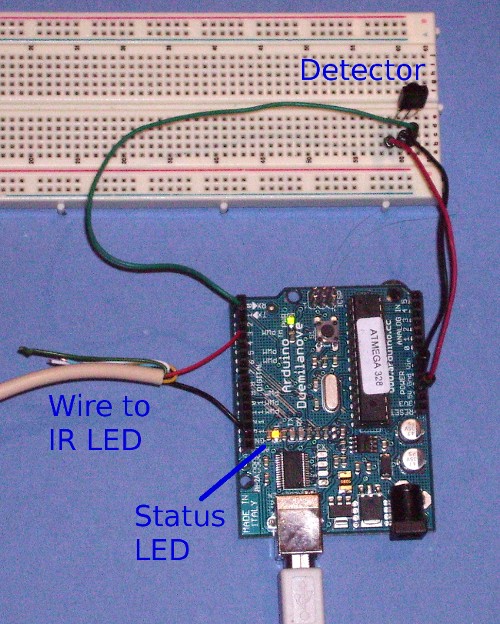
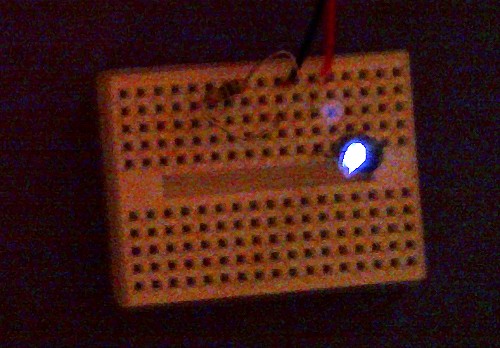


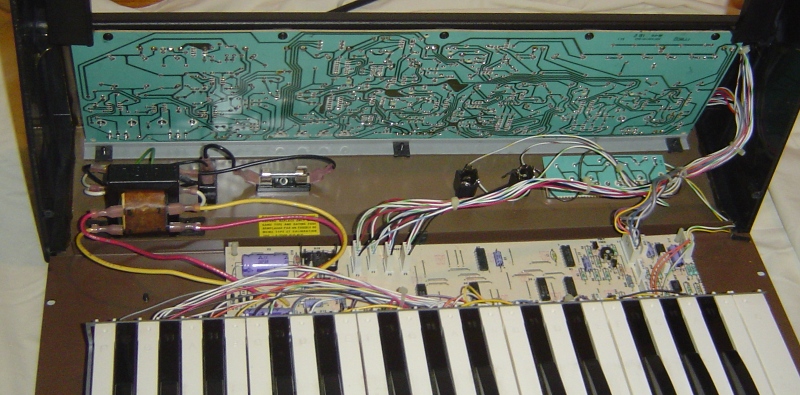
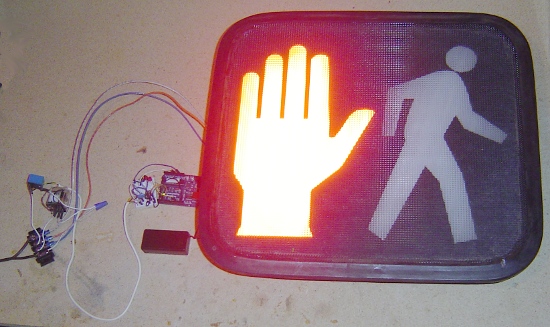
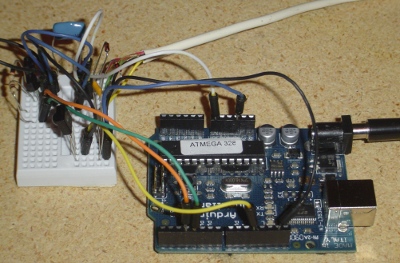
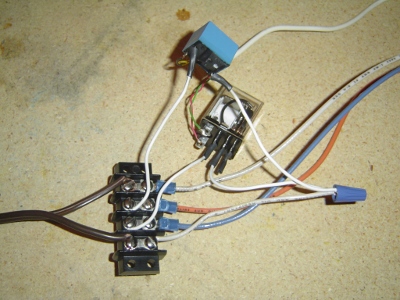
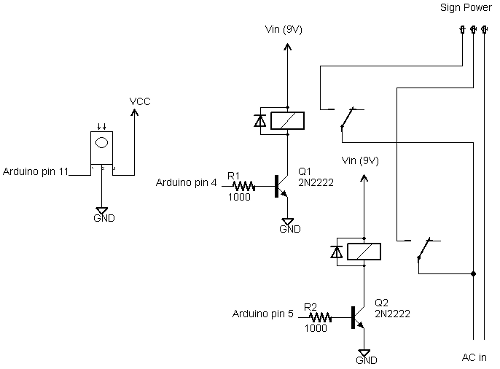

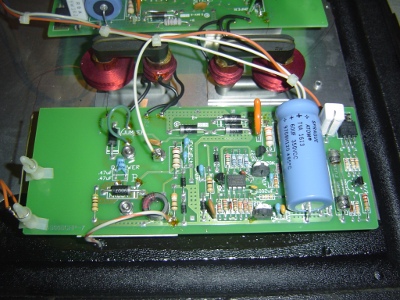
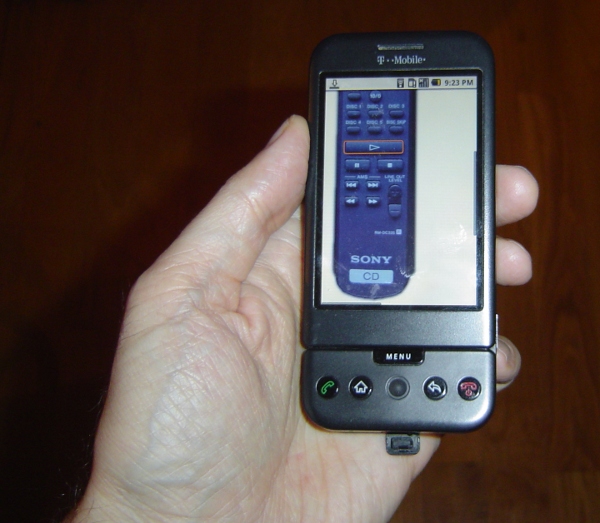
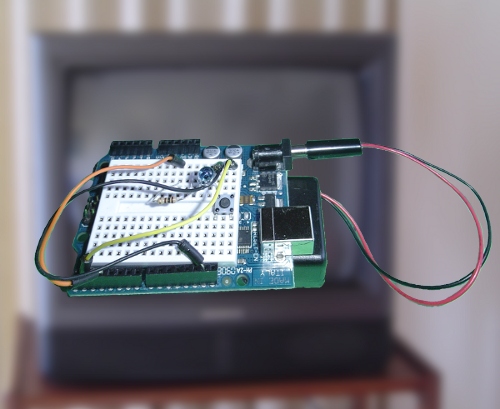
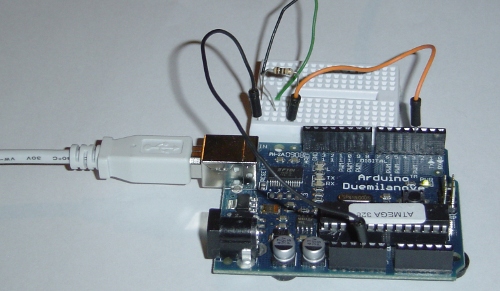
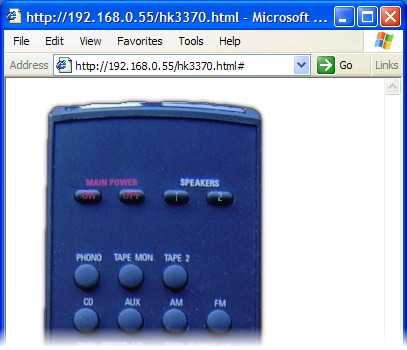
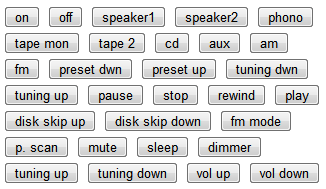
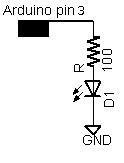
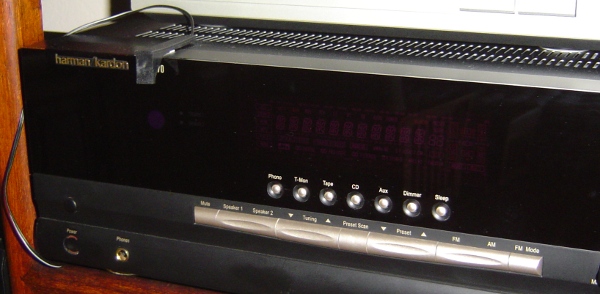

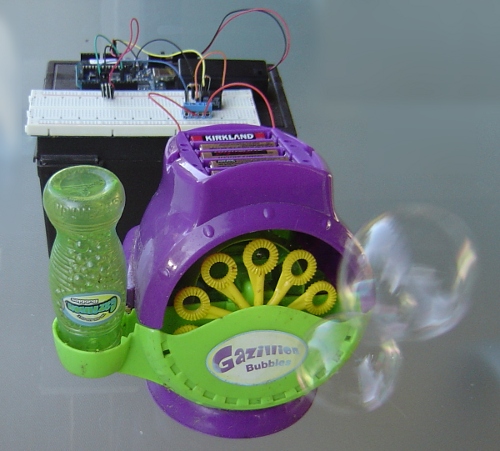

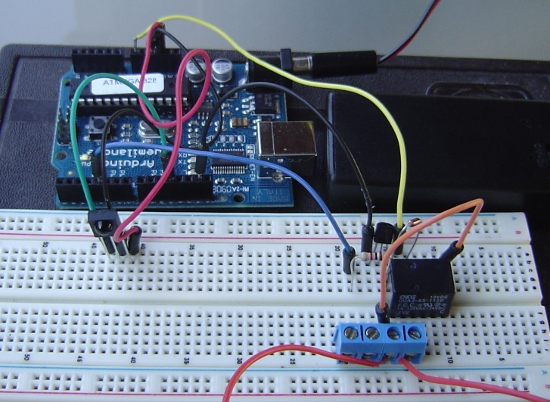
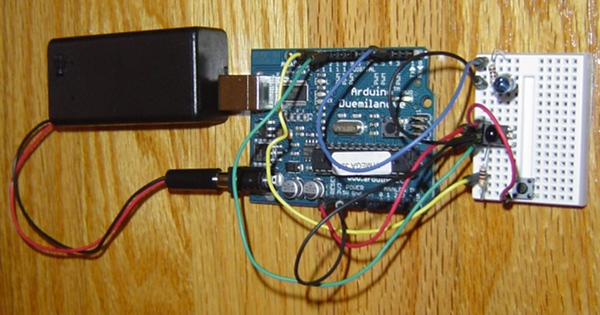
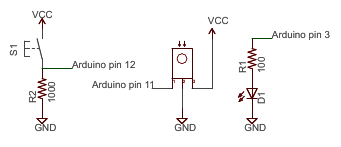


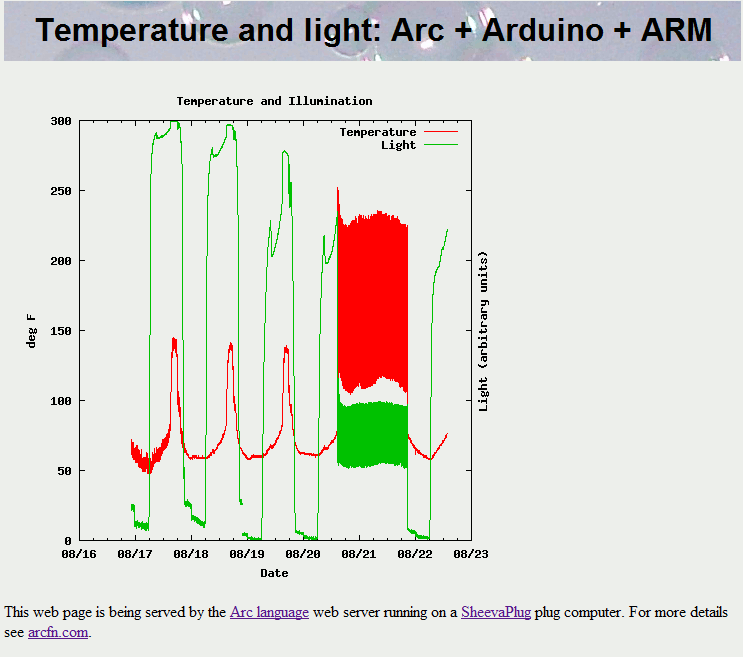
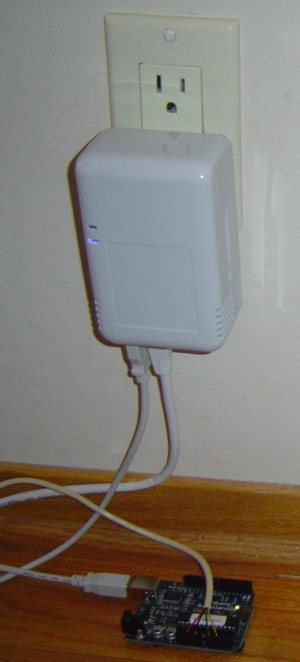
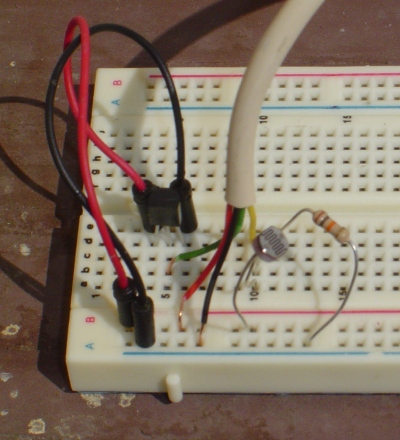 The circuit is pretty trivial. It measures light with a photocell and temperature with a TMP36 temperature sensor (
The circuit is pretty trivial. It measures light with a photocell and temperature with a TMP36 temperature sensor (